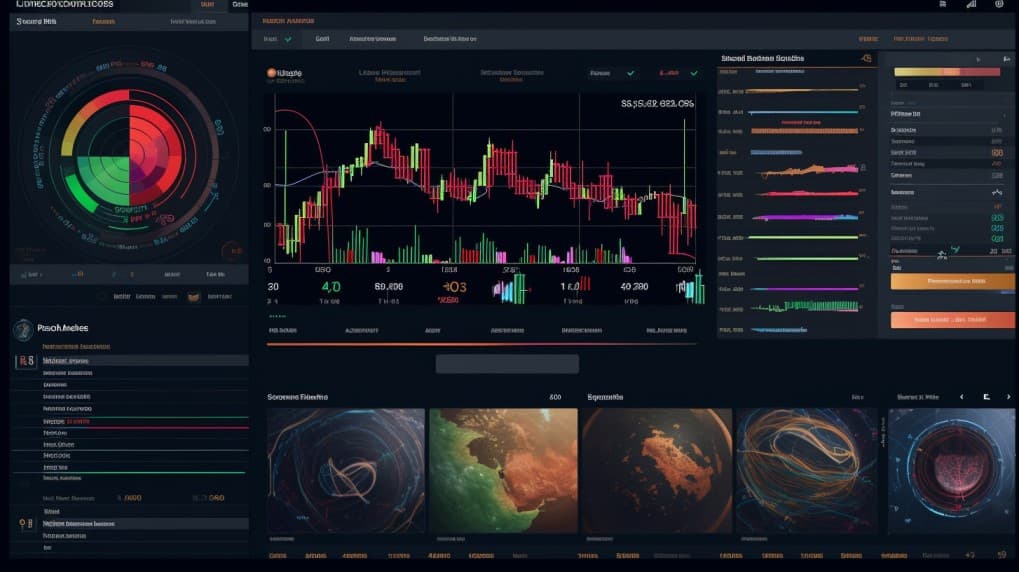
What are the rIsks associated with investing in the IGV ETF?
Investing in exchange-traded funds (ETFs) provides investors with exposure to specific sectors or industries, such as the IGV ETF, which focuses on the software industry. While ETFs can offer diversification and potential growth opportunities, it's important to be aware of the risks associated with investing in specific ETFs like IGV. In this article, we will explore the potential risks that investors should consider before investing in the IGV ETF. Understanding these risks can help investors make informed decisions and manage their investment portfolios effectively.
Understanding the IGV ETF
The IGV ETF, also known as the iShares Expanded Tech-Software Sector ETF, is a popular exchange-traded fund that focuses on the software industry. It aims to track the performance of companies involved in the development, distribution, and use of software applications and services. Before exploring the risks associated with this ETF, it's important to grasp its purpose and composition. The IGV ETF is designed to provide investors with exposure to the software sector, offering a diversified portfolio of software-related companies.
Volatility of Technology Stocks
One of the primary risks associated with investing in the IGV ETF is the inherent volatility of technology stocks. The software sector is known for its rapid innovation and disruption, which can lead to significant price fluctuations. While this volatility can present opportunities for investors, it also carries increased risk. Investors need to carefully assess their risk tolerance and consider their investment horizon when investing in the IGV ETF.
 IGV overlap What are the rIsks associated with investing in the IGV ETF?
IGV overlap What are the rIsks associated with investing in the IGV ETF?
Market and Sector Risks
Investing in sector-specific ETFs like the IGV ETF exposes investors to market and sector risks. Market risks include factors such as economic downturns, geopolitical events, and market sentiment, which can impact the overall performance of the ETF. Sector risks are specific to the software industry and may include changes in technology trends, regulatory changes, or competition. It's crucial for investors to stay informed about the market and sector conditions that can affect the IGV ETF's performance.
Tracking Error and Expense Ratios
ETFs, including the IGV ETF, aim to track the performance of a specific index or sector. However, there can be a slight difference between the ETF's returns and the performance of the underlying index or sector due to tracking error. This tracking error can be influenced by factors such as management fees, trading costs, and the ETF's investment strategy. Additionally, investors should be aware of the expense ratio, which represents the annual fees charged by the ETF. These costs can eat into overall returns and should be considered when evaluating the IGV ETF.
Investing in the IGV ETF offers exposure to the dynamic software sector, but it's important to consider the associated risks. Volatility in technology stocks, market and sector risks, as well as tracking error and expense ratios, should be carefully evaluated before making investment decisions. Conduct thorough research, consult with a financial advisor, and assess your own risk tolerance to make informed investment choices. Remember, this article does not provide any investment advisory services.
Disclaimer: This article does not provide any investment advisory services.
Source 1: IGF issuer website
Source 2: Reuters article about IGF
IGV quote and analysis
Discover the top holdings, correlations, and overlaps of ETFs using our visualization tool.
Our app allows you to build and track your portfolio.
To learn more about the IGV iShares Expanded Tech-Software Sector ETF, access our dedicated page now.
FAQ
What is the IGV ETF?
The IGV ETF, or iShares Expanded Tech-Software Sector ETF, is an exchange-traded fund that provides investors with exposure to the software industry within the technology sector.
Which companies are included in the IGV ETF?
The IGV ETF includes companies operating in the software industry, such as software developers, enterprise software providers, cloud computing companies, cybersecurity firms, and more. Specific companies held by the IGV ETF can change over time based on the composition of the underlying index.
How does the IGV ETF work?
The IGV ETF works by pooling investors' funds to purchase a portfolio of securities that closely replicates the performance of the underlying index. The ETF aims to track the performance of the S&P North American Expanded Technology Software Index, providing investors with exposure to the software industry.
What are the advantages of investing in the IGV ETF?
Investing in the IGV ETF offers potential benefits such as targeted exposure to the software industry, participation in the growth of the technology sector, diversification across software companies, access to innovative technology companies, and the potential for long-term growth. It provides liquidity, convenience, and the opportunity to invest in a specific industry without the need for individual stock selection.
What are the risks associated with investing in the IGV ETF?
Some risks associated with investing in the IGV ETF include general market risks, volatility within the technology sector, risks specific to the software industry, changes in government regulations, technological disruptions, and the performance of individual companies within the ETF. It is important to consider these risks and conduct thorough research before making investment decisions.



